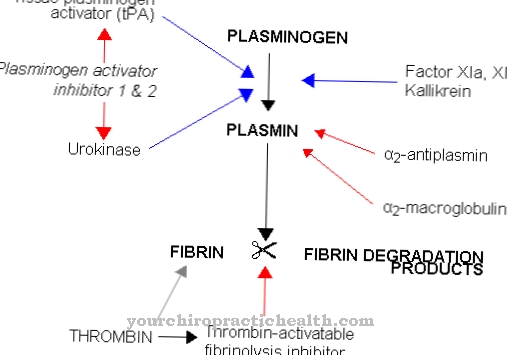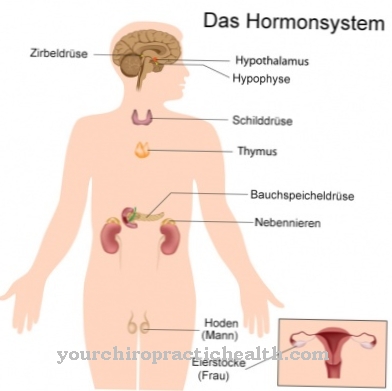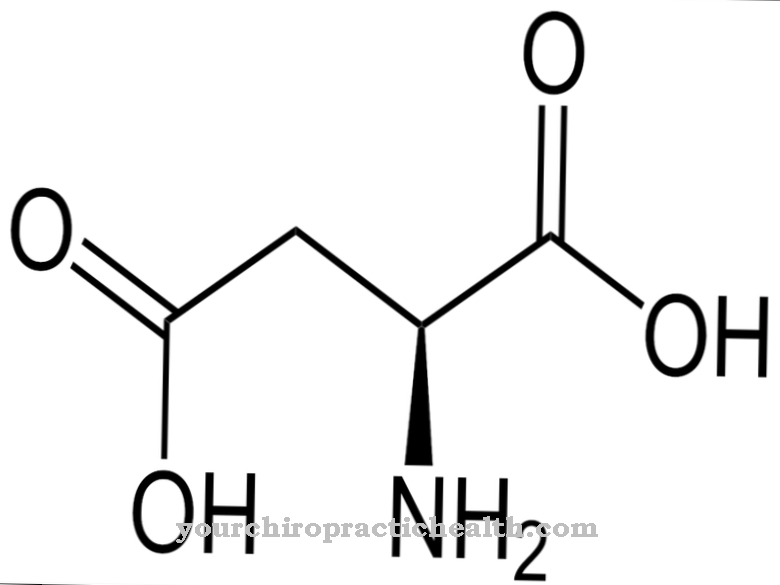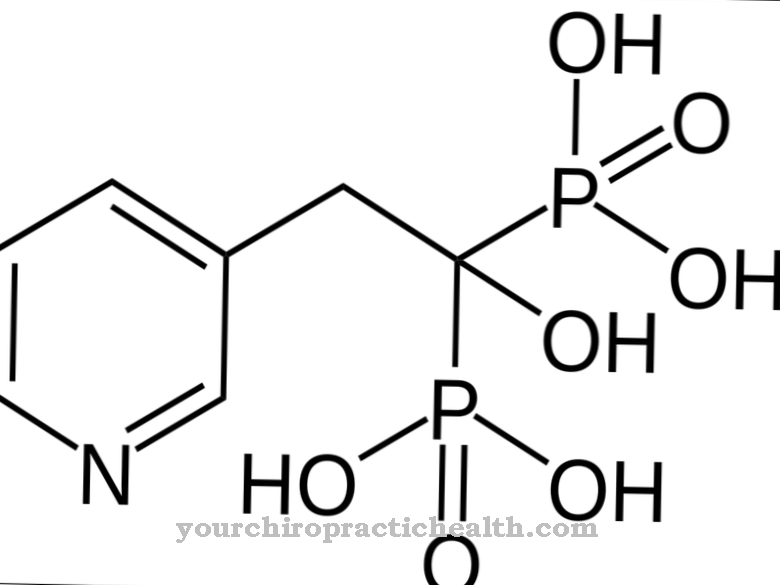Thyroid stimulin is a hormone that is produced in the pituitary gland and, together with other hormones, regulates the thyroid gland. Until now, medicine doesn't know much about thyroid stimulin, as researchers didn't discover it until 2002. However, it appears to indirectly affect bone formation and otherwise act in a similar way to thyrotropin.
What is thyroid stimulin?
Thyreostimulin is a peptide hormone. It has a mediating function and stimulates the thyroid gland to produce its hormones. Thyreostimulin has only been known in medicine since 2002. Its individual components were already known before that.
Thyroid stimulin is structurally similar to the hormone thyrotropin (TSH or THS1) and appears to use the same receptors. The two substances transmit the signal to the thyroid gland to also produce and release hormones. Medicine therefore also knows thyreostimulin by its abbreviation THS2. Thyreostimulin and thyrotropin are so-called peptide hormones. Biology understands it to be a specific group of hormones that consist of a protein component and a fat component. The amino acids of the proteins are linked with the help of peptide bonds - hence the name peptide hormone comes from. They act as messenger substances in the human body.
Function, effect & tasks
Thyreostimulin consists of two building blocks, each of which occurs in the form of a chain: the alpha chain (A2) and the beta chain (B5). According to their exact name, the medicine also calls the chains GPA2 (after "glycoprotein hormone subunit alpha") and GPB5 (after "glycoprotein hormone subunit beta"). Thyrostimulin has not been known to science for very long. It wasn't until 2002 that a research group led by Nakabayashi found the hormone. For this reason, there are only a few reliable data on the formation and spectrum of activity of thyroid stimulin.
Thyreostimulin participates in the regulation of the thyroid gland, which can be found in the human throat. Medicine also calls it Glandula thyroidea. It produces the thyroid hormones L-triiodothyronine (T3) and L-thyroxine (T4), which in turn influence many processes in the organism. The thyroid hormones participate in the control of fat, carbohydrate and protein metabolism as well as heat and oxygen regulation. In addition, T3 and T4 influence the activity of neurons and muscle cells.
A deficiency in thyroid hormones therefore often leads to fatigue, weakness, drowsiness, decreased performance, concentration problems, decreased metabolic rate and weight gain. Elevated thyroid levels, on the other hand, cause hyperactivity, wakefulness, insomnia, increased metabolic rate and weight loss.
Education, occurrence, properties & optimal values
Thyroid stimulin occurs in the anterior pituitary gland, where it is synthesized by the human body. The anterior pituitary gland is a structural unit in the brain that belongs to the pituitary gland (pituitary gland). In addition to thyroid stimulin, the anterior pituitary also produces other hormones, including follicle-stimulating hormone, luteinizing hormone, and prolactin.
The cells contain the information needed to synthesize thyroid stimulin in the form of deoxyribonucleic acid (DNA). The ribosome, a specialized enzyme, uses a copy of DNA to gradually convert it into a chain of amino acids. Because this process is similar to translation, biology also speaks of translation. Amino acids are molecules that only differ from one another in their specific residue and otherwise have the same structure. Many amino acids together form a polypeptide chain and ultimately a protein. The two building blocks of thyroid stimulin also consist of such chains.
Thyroid stimulin and thyrotropin not only stimulate the thyroid gland to release thyroid hormones, they also ensure that the body does not release too many thyroid hormones and that it stays within the normal range. Healthy people convert about 30 µgT3 and about 80 µg T4 per day. A blood count can show whether the thyroid is working well.
Diseases & Disorders
Little definitive knowledge is yet available about thyroid stimulin. Above all, the effect of thyroid stimulin on the thyroid gland seems to be certain. In animal experiments, scientists were also able to demonstrate a possible link between thyroid stimulin and abnormalities in the skull bones.
How thyroid stimulin affects the bones is not yet clear. A group of researchers led by Basselt showed that the peptide hormone only has an indirect effect on bone formation. The implications of this relationship are also still unclear. Since thyreostimulin, like thyrotropin, can bind to the DBS receptors of the thyroid gland, it may also play a role in thyroid diseases. The causes of diseases in this organ can be found in the thyroid gland itself or in a disruption of the hormones that control the thyroid gland.
An example of a DBS receptor disorder is Graves' disease. It is an autoimmune disease that does not have to be lifelong. The body mistakenly produces antibodies against DBS receptors. As a result, the characteristic triad of Basedow's disease manifests itself. The thyroid gland enlarges and eventually forms a goiter (goiter) without treatment.
The eyeball protrudes from the eye socket and may make it impossible to close the eyelids. Medicine calls this clinical picture exophthalmos or exophthalmia. Depending on the severity of the disease, only one eye can be affected or both eyeballs protrude. The third core symptom of Graves' disease manifests itself as a fast heartbeat. The racing heart is characterized by a frequency of more than 100 beats per minute (tachycardia).
In addition, a mutation in the genes that encode thyroid stimulin can interfere with the synthesis of thyroid stimulin. As a result, various thyroid dysfunction can potentially manifest itself.



.jpg)








.jpg)



.jpg)










.jpg)
